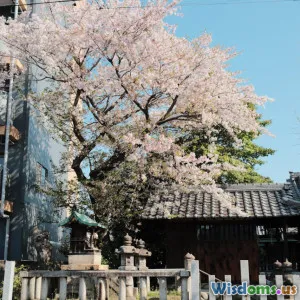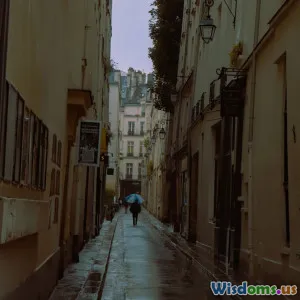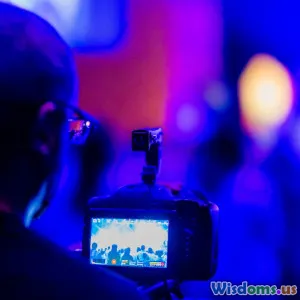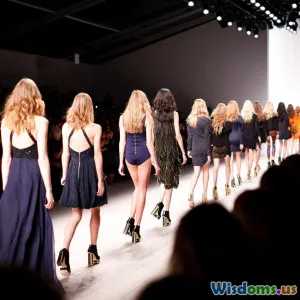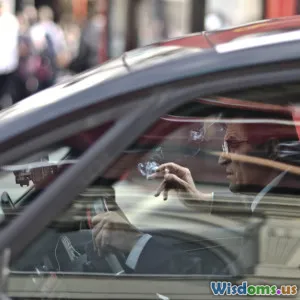
How to Blend In for Authentic Street Photography Results
9 min read Master the art of blending into urban environments for authentic street photography that captures genuine moments. (0 Reviews)
How to Blend In for Authentic Street Photography Results
Street photography is an intriguing blend of spontaneity, storytelling, and observant craft. Capturing candid moments that reveal the human experience with authenticity is both an art and a skill. However, one of the enduring challenges for photographers venturing into bustling streets, markets, or cultural hotspots is the ability to 'blend in.' When photographers stand out, their presence can disturb the natural flow, rendering shots staged or awkwardly forced. Successful street photography hinges on subtlety — the ability to dissolve into the backdrop, becoming an unobtrusive observer.
In this article, we’ll dissect what it truly means to blend in, why it matters profoundly for authentic street photography, and provide actionable strategies to achieve it. These methods let you capture unscripted moments with integrity, preserving the spontaneous vibrance of the streets.
Why Blending In Matters in Street Photography
Street photography strives to capture the unfiltered pulse of public life — interactions, emotions, and seemingly mundane moments that collectively narrate the story of our social fabric. When subjects notice a camera or a photographer’s presence too sharply, their behavior changes. Posed smiles, guarded bodies, or evasive glances often replace genuine expression.
Detecting discomfort or suspicion can disrupt the vitality of photos. Photographers who blend in unobtrusively maintain the anonymity of their setup, encouraging natural behavior and preserving the scene’s authenticity.
Renowned street photographer Henri Cartier-Bresson referred to the "decisive moment" — that precise instant where composition and subject converge into perfect narrative harmony. Blending in increases your chances to witness and immortalize this.
Real-World Example: Alex Webb
Renowned for his vibrant street photographs capturing layered complexity, Alex Webb often discusses the “thin line between presence and invisibility.” His vivid images from Latin America and the Caribbean show dense urban settings teeming with life, yet his subjects seem unaware the camera is present. The woman absorbed in daily chores, children playing, or vendors engrossed in their wares all appear captured through windows into authentic life.
Webb’s mastery comes from a deep understanding of blending into contexts both visually and behaviorally.
Practical Techniques to Blend In for Authentic Street Photography
1. Choose Your Gear Wisely
Keep your equipment unobtrusive. Larger DSLRs with big lenses can intimidate or attract attention, making subjects self-conscious.
- Compact Cameras or Mirrorless Systems: These are less conspicuous and allow for quick setups.
- Prime Lenses with a Moderate Focal Length (35mm or 50mm): They offer a natural perspective without forcing you too close into someone’s personal space.
- Avoid Flash: It’s disruptive and screams 'photographer here!' Instead, leverage natural light or learn low-light shooting techniques.
Example: Photographers like Garry Winogrand famously used small 35mm rangefinder cameras, allowing them to document bustling streets unseen.
2. Dress the Part
Visual blending doesn’t just rely on gear—it’s about melding into the social fabric.
- Neutral Clothing: Wear urban-appropriate and inconspicuous attire mirroring the environment.
- Avoid Branded Apparel or Flashy Colors: Such outfits draw attention and might evoke curiosity or suspicion.
In a casual city square, blending into crowds wearing simple clothes like jeans and t-shirts helps you become one among many.
3. Develop Observant and Unobtrusive Behavior
Your body language influences how people perceive your presence.
- Move Calmly and Confidently: Jitters or furtive movements attract eyes.
- Avoid Direct Eye Contact When Not Intent on Engaging: People tend to back away if they feel watched.
- Engage with the Environment Casually: Pretend you’re reading a map or checking your phone; this way, your camera isn’t the focal point.
4. Use Storytelling Approach to Your Positioning
Instead of hovering near one person or obvious subjects, find vantage points that allow broad scenes.
- Work corners with limited exposure.
- Shoot from benches or near architectural features like columns.
- Move like a pedestrian, photographing on the go rather than waiting rigidly.
This approach lessens your prominence and allows natural happenings to spontaneously cascade into your frame.
5. Build Patience and Wait It Out
Blending in is not about rushing; it’s about investing time to become nearly invisible.
If you rush or try too hard, your presence disrupts the environment.
Patience breeds opportunities—for example, spotting a subtle interplay between strangers or the ephemeral change of light that dramatizes a scene.
6. Engage and Interact Without Losing Authenticity
In some cases, gaining subjects' trust can aid authenticity.
- Smile or Recognize Familiar Faces: Casual, friendly behavior reduces suspicion.
- Seek Permission When Appropriate: In some cultural contexts, consent is essential and can open richer interactions.
Yet, pursuing complete anonymity works best in many settings, especially during dynamic scenes.
7. Study the Culture and Context
Understanding social dynamics, local customs, and etiquette prevents inadvertent faux pas that might expose you as an outsider.
- In some societies, photographing markets or religious symbols might require sensitivity.
- Local festivals or busy transit hubs have unique rhythms that understanding helps you anticipate moments rather than intrude awkwardly.
Example: Street photographers in Tokyo often adopt subtle nods toward cultural customs, selecting seasons and times congruent with local lifestyle.
8. Perfect Silent Shooting Techniques
Modern mirrorless cameras often offer silent shooting modes which vastly reduce shutter noise, keeping your approach discreet.
This technological advantage means you can capture fleeting moments without alerting subjects.
Putting It All Together: A Sample Scenario
Imagine you’re photographing in a crowded European town square. You arrive wearing plain clothes, your compact mirrorless camera outfitted with a 35mm lens. You do not point the camera directly at people immediately; instead, you start by observing several groupings from afar.
As your confidence and anonymity mount, you move slowly, framed by a column where your silhouette is less obvious. Moments bubble naturally: a street musician sighs between songs, a child chases a pigeon, locals converse animatedly—all caught candidly because you disrupted none of their natural actions.
By the day’s end, your memory card carries authentic slices of life, moments none would have posed for, a testament to blending well.
Conclusion
Blending in for authentic street photography is not simply about hiding but about integrating. It’s a comprehensive approach involving the right gear choice, respectful behavior, cultural literacy, and subtle artistry. The best photographs emerge when the photographer becomes part of the flow, virtually invisible yet ever attentive.
With intentional preparation and mindful presence, you too can unlock street photography treasures that speak candidly, conveying the raw human narratives thriving just beneath the surface of public life.
Rate the Post
User Reviews
Other posts in Street Photography
Popular Posts











